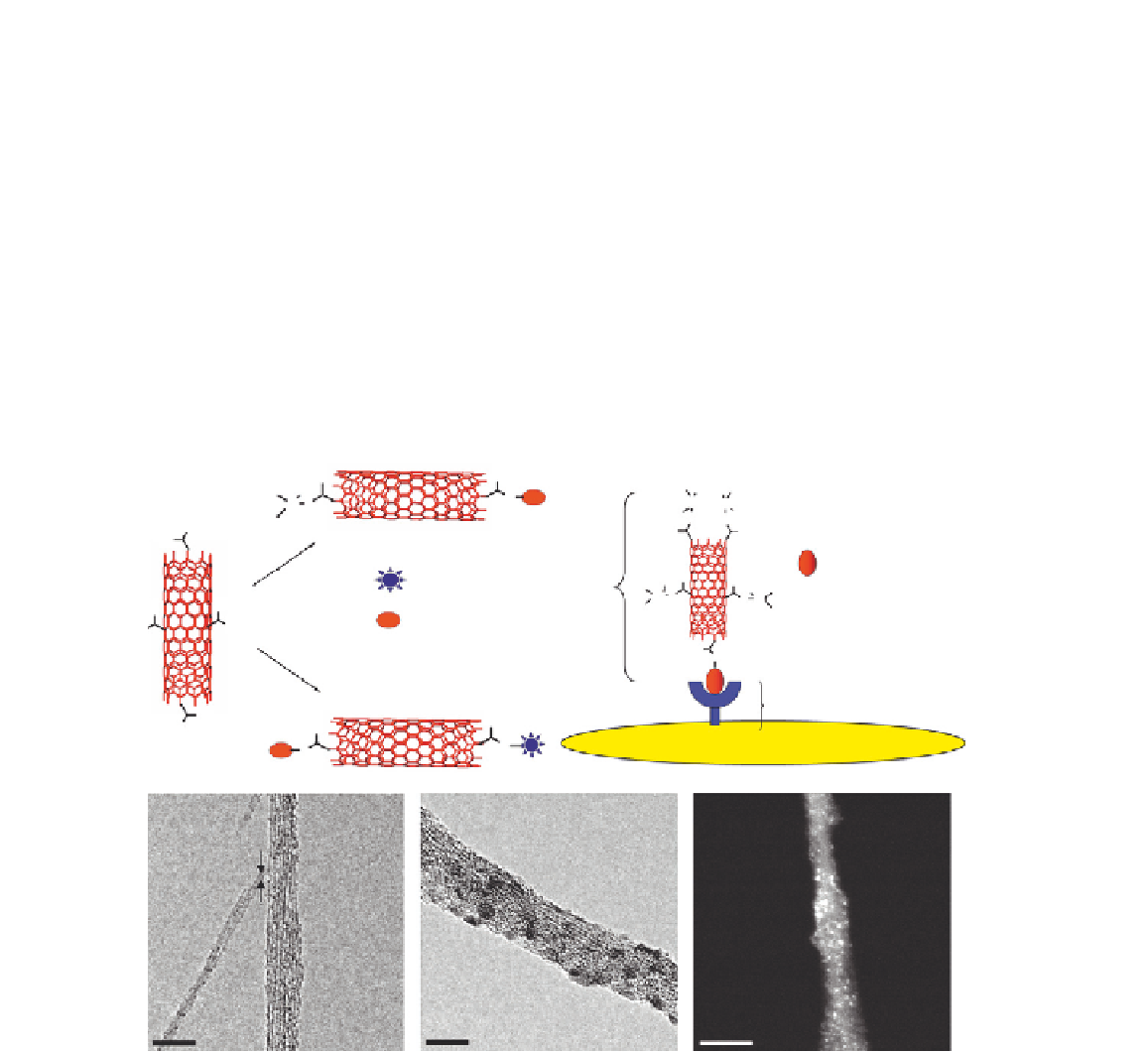Biomedical Engineering Reference
In-Depth Information
there has been intense interest in these allotropes of carbon due to their unique physical and chemi-
cal properties and potential applications in a wide range of fields, from electronic devices and sensors
to nanocomposite materials of high strength and low weight. Pristine CNTs are not soluble and it
was only after the development of strategies to functionalize these molecules with organic groups and
render them soluble, that had opened the way to bio-applications of CNTs. Owing to their high sur-
face area, they are capable of adsorbing or conjugating with a wide variety of therapeutic molecules.
Thus, CNTs can be surface-engineered (i.e., functionalized) in order to enhance their dispersability
in aqueous phase or to provide the right functional groups that would bind to the desired therapeutic
material or the target tissue to elicit a therapeutic effect. CNTs might help the attached therapeutic
molecule to penetrate through the target cell to treat diseases
[2-5]
and a recent example of CNTs
with a variety of functional groups relevant to cancer therapy
[6]
is shown in
Figure 20.1
. Here,
we briefly review the therapeutic applications of CNTs with a major focus on cancer and the latest
research studies on oral cancer therapy.
(A)
O
O
(B)
H
2
N
NH
2
H
2
N
Cl
pt
O
NH
2
H
2
N
H
pt
pt
DDS- SWNT+cisplatin+EGF
EGFR- Epidermal growth
factor receptor
- Epidermal growth
factor
Cl
O
Cl
O
O
H
2
N
OH
O
O
Qdot
O
Cl
Pt O
O
Cl
O
DDS
H
2
N
H
2
N
NH
2
NH
2
Pt
O
O
EGF
OH
HO
O
NH
EGFR
Cancer cell surface
O
O
HO
O
N
H
N
(C)
(D)
(E)
10 nm
10 nm
10 nm
FIGURE 20.1
(A) Schematic representation of functionalization of SWNTs with quantumdots (Qdots), EDC, and cisplatin;
(B) SWNT bioconjugated with cisplatin and EGF, targeting cancer cell surface receptor EGFR; (C-E) TEM
images showing the various functional groups, with cisplatin shown as bright spots.
From A. A.
[6]
.

